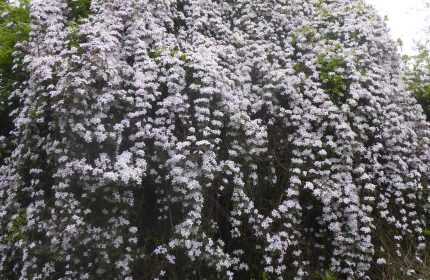The top 12 edible flowers you can use in your cooking
Not just a decoration, edible flowers also have a unique taste, so they add not only style but substance to your plate.
From the almond-y taste of appetising hawthorn to the subtly spicy essence of cornflower, edible flowers will help you unlock a whole new flavour palate.
From Valentine’s Day dinner all the way through to Christmas party treats, you can add edible flowers to your kitchen creations all-year round. To help you navigate the best blooms to cook and bake with in every season, here are Rowse’s top 12 edible flowers you should be using in the kitchen.

- Chive blossoms – the popping purple blossoms that grow on chives are edible as well as the herb itself! Chive blossoms are ready April and May, and you can pull apart the large flowers into smaller florets and sprinkle them over all kinds of salads.
- Crab apple tree blossoms – pretty pink or whimsical white crab apple tree blossoms burst into life from March to May and are a great early nectar source for bees. They give us a charming cocktail garnish, ready in spring.
- Hawthorn – It’s not only the berries from a Hawthorn plant that you can eat – the late spring blooms are a fantastic ingredient for delicious cordials or brew in boiling water to make a warming tea.
- Cornflower – Deep purple cornflower blooms from June to September, and its neutral flavour makes it one of the most versatile edible flowers you can use in the kitchen. It’s perfect in both sweet and savoury dishes, whether the petals are mixed into salads or delicately arranged on a cake.
- Elderflower – Elegant elderflower is well known for its use in cordials, and its familiar flavour can also be cooked into delicious cakes and biscuits. The delicate flowers bloom from May to August, but it’s important not to eat foraged elderflowers raw – always cook them to destroy the plant’s mild toxins.
- Lavender – Earthy, minty lavender is a popular culinary herb, used in baking, sweets, and even alcoholic drinks. This pretty purple bloom is ready in June and July.
- Borage – Beautiful borage is a plant that bees love best. It’s also yummy for humans – it has a sweet flavour, and some even say it tastes like honey! The striking flower, which blooms all the way from May until November, looks magnificent frozen into ice cubes for your summer cocktails.
- French Marigolds – Vibrant and bitter French marigolds flower from July to September and add a pop of warm colour to decorated cakes and a glamorous garnish to desserts.
- Nasturtiums – With a peppery kick, nasturtiums are incredibly easy to grow in the garden and pair well with savoury salads, but they can also be used to infuse vinegars and alcohols too. The flowers will bloom late into the season, even into October.
- Dahlias – Intricate dahlias flower from July to November, and different varieties have different flavours, ranging from subtly spicy to crisp and bland. If you grow dahlias in the garden, you’ll even have a two-for-one – you can also eat dahlia tubers which make fantastic rostis.
- Primrose – Colourful primrose flowers bloom in the colder months, from December to May. They have a mildly sweet flavour and look beautiful on banquet tables and in Christmas party cocktails.
- Violas – Popular edible violas flower all year round and have a sweet flavour which is almost slightly minty. They’ve been popularised by Marks & Spencer, who sell packs of edible viola flowers.
Most edible flowers can be pressed, which means they can be enjoyed for months after their growing season.




















